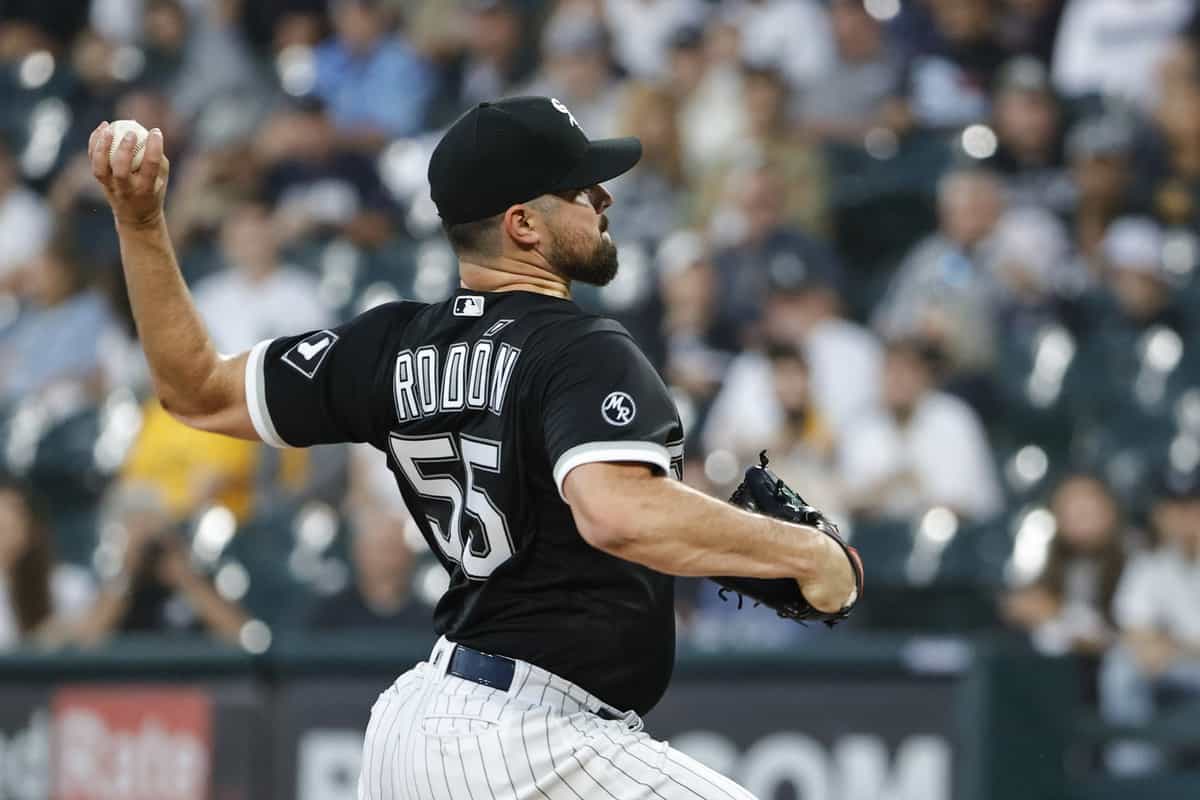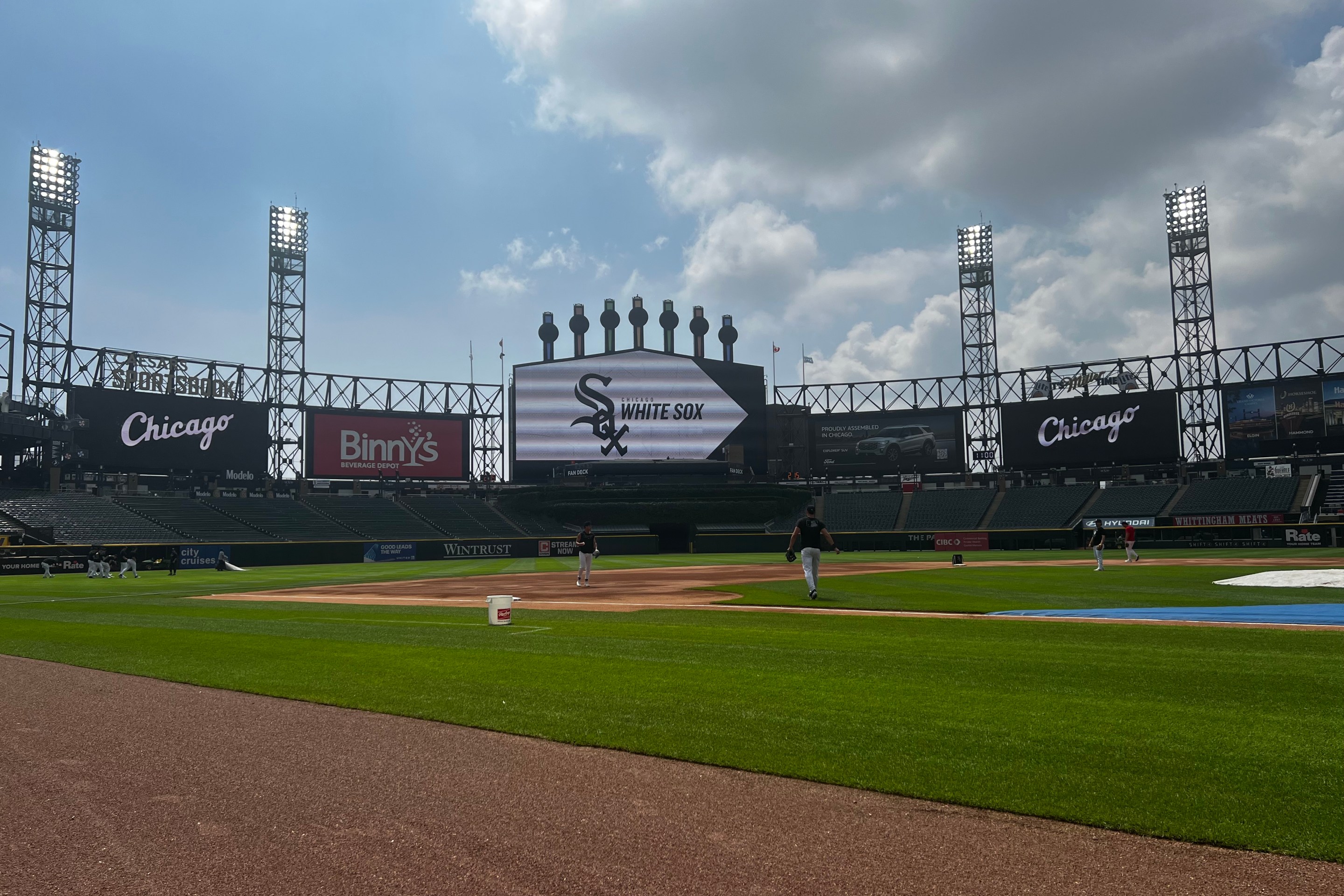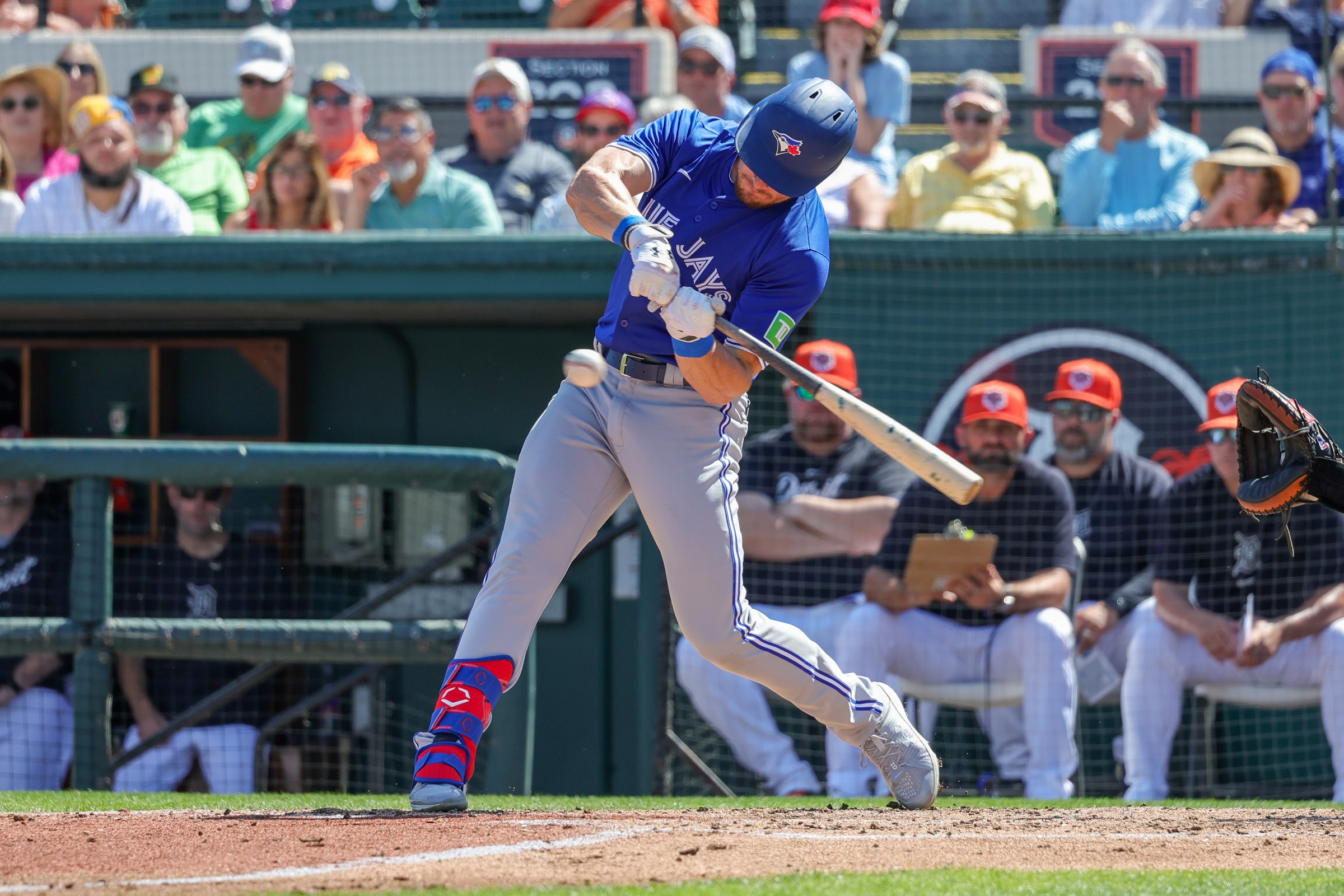To complete the grading process, which started with the previously-published position-player review, here are assessments of the 2021 White Sox pitchers. To reiterate some context from that post, these grades are more art than science due to the subjective nature of how much expectations for a player should affect their grade. My goal is to balance actual player performance against their expectations and probable role (both short-term and long-term) entering the season. While I may mention postseason performance in a player review, the grades primarily reflect regular season performance.
Per usual, I consider an average grade to be someplace on the C/C+ borderline. An ‘A’ is the highest grade and an ‘F’ is the lowest grade.
In the past, I used 25 innings pitched as the cutoff, but doing so this season would result in excluding two prominent trade deadline acquisitions, so I'm cutting everyone from Mike Wright on down, even though Wright threw as many innings as our first man up below.
In ascending order of innings pitched….
Ryan Tepera (RP): 22 G, 18.0 IP, 32.0% K, 9.3% BB, 1 HR, 2.50 ERA, 2.56 FIP, 0.5 fWAR, 0.6 bWAR
Tepera had a rough introduction to the South Side, as he blew a lead in his first appearance and was booed off the field. After that, however, he was arguably the bullpen's most reliable non-Hendriks reliever. He brought it in the postseason as well, providing much-needed pitching stability to the only game the White Sox won. Entering the trade deadline, I was concerned that Tepera would be the only move that the White Sox would make. If only that were the case. Grade: B+
Craig Kimbrel (RP): 24 G, 23.0 IP, 36.7% K, 10.2% BB, 5 HR, 5.09 ERA, 4.56 FIP, 0.0 fWAR, 0.0 bWAR
Kimbrel will somehow go down as only Rick Hahn's third-biggest trade disaster to-date, though this one is eminently forgivable. This was the sort of big trade deadline play that the Sox needed to make, and there wasn't anything to suggest a collapse was imminent. While a little wildness was expected from Kimbrel, it was tough to watch when paired with Seby Zavala's poor pitch blocking skills and Yasmani Grandal's hobbled knees. The truly unacceptable part of Kimbrel's line, however, were the home runs, which came at damaging moments. The hard contact was too frequent to really trust him in the postseason. Tony La Russa did anyway. Grade: F
Evan Marshall (RP): 27 G, 27.1 IP, 23.0% K, 8.0% BB, 5 HR, 5.60 ERA, 4.63 FIP, 0.1 fWAR, -0.2 bWAR
You'd be forgiven if you forgot Marshall was part of the 2021 White Sox. Before succumbing to a UCL injury in late June, Marshall just wasn't the same guy he was the past two seasons. In 2019 and 2020, he had fashioned his changeup into an elite pitch, but this season, opponents slugged .667 against it. There's not much here if the changeup's not working, and the White Sox will have a decision to make regarding bringing Marshall back next year. He figures to be a cheap sign in his third year of arbitration and the Sox will have to decide whether he's likely to get his mojo back. Grade: D-
Ryan Burr (RP): 34 G, 36.2 IP, 21.9% K, 13.9% BB, 3 HR, 2.45 ERA, 4.23 FIP, 0.2 fWAR, 1.1 bWAR
Did Ryan Burr break out like he predicted he would? He was arguably a net positive in the Sox bullpen, and that makes for a pretty strong year for a fringe roster guy. Burr featured his usual combination of too many walks and an underwhelming number of strikeouts, but he had a new weapon at his disposal this season: the ground ball. Improbably, 65% of Burr's four-seamers were beat into the ground this season, which actually exceeds the 50% mark posted by his diving cutter and slider. There's worse ideas than seeing if those rates can stick. Grade: B-
Codi Heuer (RP): 40 G, 38.2 IP, 23.5% K, 6.0% BB, 5 HR, 5.12 ERA, 3.69 FIP, 0.5 fWAR, 0.0 bWAR
One of the bigger surprises I found looking into Heuer's numbers was the +0.93 Win Probability Added, because my emotional gut-reaction to his season was that he disappointed. On April 12 against Cleveland, he threw 2⅓ one-hit, four-strikeout innings in a tie game to let the Sox win it in the bottom of the 9th. In a seven-inning May 29 game against Baltimore, Aaron Bummer loaded the bases in the sixth with no one out and the Sox up three. Heuer came in and held them to just one run to help the Sox seal the win.
What? His inconsistency is the Cubs' problem now. We might as well remember the times that were good. Grade: C-
Matt Foster (RP): 37 G, 39.0 IP, 23.0% K, 7.5% BB, 9 HR, 6.00 ERA, 5.27 FIP, -0.1 fWAR, -0.4 bWAR
Oh, the fickle nature of middle relievers. The White Sox bullpen underperformed lead-holding expectations, and Foster was one of the chief culprits. He looked like an important cog in the relief corps in 2020, but got absolutely blasted in 2021. After dominating hitters with his changeup and slider last season, hitters slugged .705 and .636 (respectively) off of those pitches this year. Foster's upside from 2020 probably gives him an inside track to be a roster yo-yo again next year, but that's about it. Grade: F
Garrett Crochet (RP): 54 G, 54.1 IP, 28.3% K, 11.7% BB, 2 HR, 2.82 ERA, 2.80 FIP, 1.3 fWAR, 1.3 bWAR
Of all the pitchers on this list, Crochet probably possesses the greatest difference between perceived performance and aggregate metrics. Part of that has to do with his reduced velocity, which dropped his effectiveness to merely "pretty good" when he was basically a cheat code last season. Further tarnishing the perception is that his season was (essentially) bookended by a couple of 10th-inning breakdowns near the start of the season and failing in two postseason appearances at the end of it.
In between, the ride was weird for the former first-rounder. There was a stretch early in the year when La Russa relegated Crochet to mop-up duty for some reason, despite strong numbers. Crochet had multiple stretches of dominance, but struggled with control occasionally after not walking a single batter in his six innings last season. Another area of concern is that his 4.0% HR/FB rate does not seem sustainable. Heading into 2022, it's a mystery who Crochet will be and how the White Sox will use him. However, it does unfortunately seem like the monster from 2020 is gone. Grade: B+
Aaron Bummer (RP): 62 G, 56.1 IP, 31.0% K, 12.0% BB, 3 HR, 3.51 ERA, 2.96 FIP, 1.2 fWAR, 0.5 bWAR
As Hawk Harrelson might have said, "If Bummer didn't have bad luck, he wouldn't have any luck at all." The above stats, coupled with an absurd 76.1 percent ground ball rate (by far the best in baseball), resulted in a -0.68 Win Probability Added season. In 2021, Bummer induced just five ground ball double plays and allowed five singles on what I'll call "dribblers" -- ground balls under 65 mph that initially land within five feet of the plate. In 2019, Bummer got 15 double plays and yielded zero singles on dribblers. There wasn't anything wrong with him this season, he was just unable to consistently get good results on his typically-excellent contact profile. The White Sox would do well to review whether infield positioning contributed to the lack of double plays. Grade: B
Reynaldo López (SP/RP): 20 G, 57.2 IP, 24.8% K, 5.9% BB, 10 HR, 3.43 ERA, 4.19 FIP, 0.7 fWAR, 0.9 bWAR
In the spring, López had surgery on his corneas to fix blurred vision. The "finally he could actually see the strike zone" jokes basically write themselves. López' control was better than it's ever been in 2021, and while homers still got to him, the reduced free passes helped him to limit the damage. What's crazy about this strong performance was how it came from seemingly out of nowhere. López was actually quite bad for a month and a half after returning from the eye surgery, and there wasn't much to suggest he'd be good upon getting promoted to the majors besides two good starts out of his final three at Charlotte. I guess the only thing predictable about baseball is that it will keep surprising you. Grade: B+
José Ruiz (RP): 59 G, 65.0 IP, 23.2% K, 9.2% BB, 8 HR, 3.05 ERA, 3.98 FIP, 0.5 fWAR, 1.1 bWAR
Those numbers for Ruiz look pretty darn good until you put some context in there.

Ruiz was as tough as they come with the game out of hand. That gave Tony La Russa some understandable temptation to try him out in situations that matter, but that did not go well, and Ruiz' final Win Probability Added was -1.09. When assigned mop-up duty, Ruiz could be trusted to prevent additional pitchers from being necessary to finish a game. At least that's more than he used to give us. Grade: C
Michael Kopech (SP/RP): 44 G, 69.1 IP, 36.1% K, 8.4% BB, 9 HR, 3.50 ERA, 2.97 FIP, 1.7 fWAR, 1.3 bWAR
Over half of Kopech's earned runs came in just three appearances, none of which were starts. Those three blowups aside, Kopech's first full season was characterized by spellbinding dominance. Folks with eyes on Kopech as a future starter will be encouraged that he allowed just three runs in 14 innings across four starts, and opposing hitters managed just a sickly .467 OPS against him in those outings. In a setup role, Kopech was arguably La Russa's most reliable weapon to get the game to Liam Hendriks. Perhaps the best news from Kopech's season is that he made it through without any arm trouble (though as a true member of the 2021 White Sox, he did miss time with the obligatory hamstring injury). That in of itself is a success as well. Grade: A-
Liam Hendriks (RP): 69 G, 71.0 IP, 42.3% K, 2.6% BB, 11 HR, 2.54 ERA, 2.34 FIP, 2.7 fWAR, 2.6 bWAR
Predictably, in swapping in Liam Hendriks for Alex Colome, the White Sox got a vastly better pitcher and a downturn in results. Colome's save percentages in a White Sox uniform were unassailable, but also unsustainable (as the Minnesota Twins learned). We were likely going to have to get used to a save being blown here or there, and sure enough, Hendriks coughed up the lead six times and lost a few games when coming in with the score tied. As a result, he finished just 30th among relievers in Win Probability Added despite leading the American League in both saves and reliever fWAR (I mean, just LOOK at that K/BB ratio!). The main culprit was ill-timed home runs, which were not an issue for him in 2019 and 2020. Still, Hendriks is an extremely good relief pitcher, and the Sox largely got what they paid for. Grade: A-
Carlos Rodón (SP): 24 G, 132.2 IP, 34.6% K, 6.7% BB, 13 HR, 2.37 ERA, 2.65 FIP, 4.9 fWAR, 5.1 bWAR
Are you kidding me? Rodón entered the season as an uninspiring retread solution to the White Sox' fifth starter problem. He ended it as a guy who could be in the Cy Young conversation had the White Sox not had good reason to manage his workload. Rodón finally displayed the upside befitting a number-three overall pick, and it helped greatly that his arm was finally up to full strength. Of the 24 hardest pitches that Carlos Rodón has thrown as a major leaguer, 18 of them happened during the 2021 season. The other six happened in 2016, and none of the top 113 took place between 2017 and 2020. Until this year, Rodon just hasn't had the health to break out, and he proved the world wrong by showing what kind of pitcher he can be when his body cooperates. Grade: A
Lance Lynn (SP): 28 G, 157.0 IP, 27.5% K, 7.0% BB, 18 HR, 2.69 ERA, 3.32 FIP, 4.2 fWAR, 5.4 bWAR
Lynn didn't give the White Sox all that close to 200 innings, but like Rodón, he'd be in the Cy Young discussion with more innings, and the Sox had no reason to push him down the stretch. Lynn paced the Sox in Win Probability Added at 3.00, which ranks eighth among starting pitchers leaguewide. He sputtered a bit toward the end of the season and drew a nightmare matchup in the postseason in the form of the fastball-crushing Astros, but Lynn spent most of the year neutering opposing offenses. He held opponents to one or zero earned runs in a staggering 19 of his 28 outings. Overall, the year was a great success. Grade: A
Dallas Keuchel (SP): 32 G, 162.0 IP, 13.2% K, 8.2% BB, 25 HR, 5.28 ERA, 5.22 FIP, 0.6 fWAR, 0.1 bWAR
Keuchel's pitch-to-contact approach doesn't work when the contact goes over the fence a lot. He yielded a staggering 50 barreled balls, 20 more than in any other season of his career. Keuchel was still good at getting ground balls, but the mistakes got hammered harder than ever before, making him the weak link in the White Sox rotation. We can give him credit for battling through 30 starts and throwing enough innings to prevent the Sox from counting on the Jimmy Lamberts of the world, but that's about it. Grade: D-
Dylan Cease (SP): 32 G, 165.2 IP, 31.9% K, 9.6% BB, 20 HR, 3.91 ERA, 3.40 FIP, 4.4 fWAR, 2.9 bWAR
I was really hard on Cease in last year's installment because he was taking steps backwards and finished with the worst FIP in baseball in 2020. Given the starting point, my expectations for Cease were not high. However, like Carlos Rodón, he became one of the biggest reasons the White Sox were able to outperform their preseason outlook. Cease has always had obvious strikeout stuff, but in 2021, that finally came paired with actual strikeouts.
Lest you read the grade below and consider my range too lenient, consider the following. Before the season, PECOTA projected Cease's 99th percentile FIP to be 3.48. He wound up beating that mark. This was an absurd amount of progress for one year, and what Cease did in 2021 was a huge boon to the organization. Grade: A
Lucas Giolito (SP): 31 G, 178.2 IP, 27.9% K, 7.2% BB, 27 HR, 3.53 ERA, 3.79 FIP, 4.0 fWAR, 4.3 bWAR
If Giolito's season disappointed anyone, it's because the expectations placed on him were very, very high. In fact, ZiPS projected him to be the best pitcher in all of baseball before the season. After a somewhat pedestrian first half, Giolito increased usage of his slider at the expense of his changeup and wound up drastically improving his results. Eventually, he got his ERA back down to familiar territory by season's end. I won't be giving him the top grade because of where expectations were entering the year, but it was still a very strong season for Giolito. Grade: A-
The Class Rank:
- Carlos Rodon: A
- Lance Lynn: A
- Dylan Cease: A
- Michael Kopech: A-
- Lucas Giolito: A-
- Liam Hendriks: A-
- Reynaldo Lopez: B+
- Ryan Tepera: B+
- Garrett Crochet: B+
- Aaron Bummer: B
- Ryan Burr: B-
- Jose Ruiz: C
- Codi Heuer: C-
- Dallas Keuchel: D-
- Evan Marshall: D-
- Craig Kimbrel: F
- Matt Foster: F
(Photo Credit: Kamil Krzaczynski-USA TODAY Sports)






